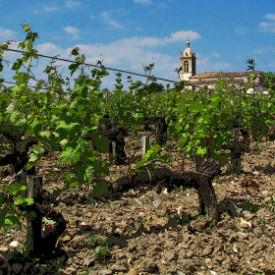Bordeaux Grape Varieties; Comfort Food For The Oenophile.
Chapter Sixteen. Part Five.
California winemakers like to imitate the French. No, they’re not on strike. In an attempt to mimic the classic wines of Bordeaux, they often blend Cabernet Sauvignon, Merlot, Cabernet Franc, Petit Verdot and Malbec (the main varieties found in red Bordeaux wine), then they take a 3-hour lunch and go on strike.
Hey, I’m kidding. It’s what I do. I poke fun at my friends which probably explains why my Facebook page only has unfriend and unlike buttons. Seriously, many of these Bordeaux imitations are very elegant, feminine wines – in an unshaven sort of way.
Read MoreA Stroll Through History On The Roman Road To St.-Emilion
Chapter Sixteen. Part Six.
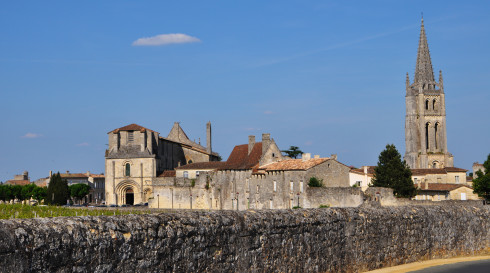 The wines of Bordeaux were my first oenological love, a passion I’ve shared with my wife Caroline for over thirty years. To rekindle our premier amour we visited Bordeaux and like the forgotten vignerons, monks and armies before us, we hiked an ancient Roman Road through historic vineyards to get to the higher place known as St.-Emilion.
The wines of Bordeaux were my first oenological love, a passion I’ve shared with my wife Caroline for over thirty years. To rekindle our premier amour we visited Bordeaux and like the forgotten vignerons, monks and armies before us, we hiked an ancient Roman Road through historic vineyards to get to the higher place known as St.-Emilion.
The Roman Road, built to service a triumphant empire 2000 years ago, is now protected from development and allows travelers to walk through Bordeaux vineyards first planted in the 2nd century. As it passes through the vineyards of Chateau Franc-Mayne it is little more than a path strewn with broken cobblestones, sloping gently upward as if propelling you to a higher purpose. This seems somehow fitting as the road leads to the medieval village named for the Friar Emilion, a reclusive 8th century monk who achieved sainthood
Read MoreCh Ch Ch Changes to the 1855 Bordeaux Wine Classification
Chapter Sixteen, Part Four.
“Every time I thought I’d got it made, it seemed the taste was not so sweet.” David Bowie
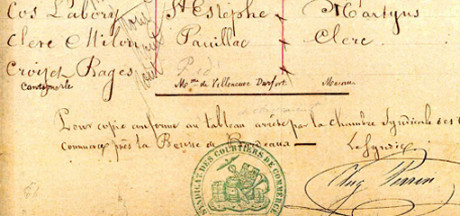 The authors of the Official Bordeaux Wine Classification made an unusual entry on the original handwritten document drawn up in 1855. Cantemerle (now known as Chateau Cantemerle) appears to have been written on the bottom of the historic list in a different hand than the other entries. It is squeezed into a narrow space below the Fifth Growth ranked Croizet-Bages (formerly the bottommost entry) and looks like an afterthought on the part of the authors. Cantemerle was also left off the map of estates that was displayed at the 1855 exposition, although it has appeared on every subsequent map since 1856.
The authors of the Official Bordeaux Wine Classification made an unusual entry on the original handwritten document drawn up in 1855. Cantemerle (now known as Chateau Cantemerle) appears to have been written on the bottom of the historic list in a different hand than the other entries. It is squeezed into a narrow space below the Fifth Growth ranked Croizet-Bages (formerly the bottommost entry) and looks like an afterthought on the part of the authors. Cantemerle was also left off the map of estates that was displayed at the 1855 exposition, although it has appeared on every subsequent map since 1856.
Bordeaux Has Class
Chapter Sixteen, Part Three.
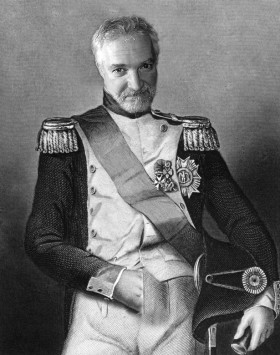 People are always asking me to explain the term Classified Bordeaux. I might be in the emergency room and the attending physician will say, “Can you explain Classified Bordeaux, and by the way this thing has got to come out,” or I’ll be buying a bottle of Chateau Lafite-Rothschild and the cashier will say, “What exactly is a Classified Bordeaux and that will be $18,000 please.” Since the Bordeaux Classification rarely changes, my answer is always the same; “I can tell you but then I’ll have to kill you because it’s classified!”
People are always asking me to explain the term Classified Bordeaux. I might be in the emergency room and the attending physician will say, “Can you explain Classified Bordeaux, and by the way this thing has got to come out,” or I’ll be buying a bottle of Chateau Lafite-Rothschild and the cashier will say, “What exactly is a Classified Bordeaux and that will be $18,000 please.” Since the Bordeaux Classification rarely changes, my answer is always the same; “I can tell you but then I’ll have to kill you because it’s classified!”
On the other hand, regular readers of WineSnark have already died a thousand deaths by sitting through countless recycled jokes like that one so you deserve to know how Bordeaux got its class.
Back in 1855 when I was just a toddler, Emperor Napoleon III requested an official classification of the Bordeaux wines that were to be presented at the Exposition Universelle de Paris.
Read MoreA Look At French Wine Laws
Chapter Sixteen, Part Two.
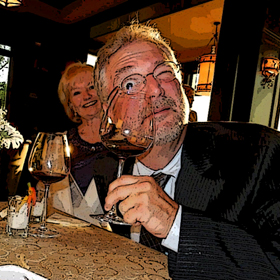 France has hundreds of wine appellations that are broken down into three quality levels; Appellation d’Origine Contrôlée (AC or AOC), Vin de Pays (VdP), and Vin de Table (VdT). These designations are controlled by the Minister of Agriculture, under the auspices of the Institut National de l’Origine et de la Qualité. Rather than adopt the logical acronym INOQ, the organization retained an earlier acronym INAO (for Institut National des Appellations d’Origine) so they wouldn’t have to replace the stationary.
France has hundreds of wine appellations that are broken down into three quality levels; Appellation d’Origine Contrôlée (AC or AOC), Vin de Pays (VdP), and Vin de Table (VdT). These designations are controlled by the Minister of Agriculture, under the auspices of the Institut National de l’Origine et de la Qualité. Rather than adopt the logical acronym INOQ, the organization retained an earlier acronym INAO (for Institut National des Appellations d’Origine) so they wouldn’t have to replace the stationary.
Change Comes Slowly To Bordeaux
Chapter Sixteen, Part One.
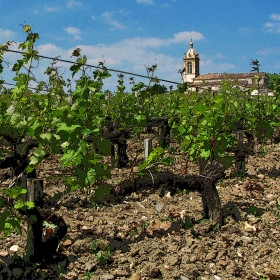 On the right bank of the Gironde River in the heart of Bordeaux, and just a short bicycle ride from the medieval village of St. Emilion, sits the family run Chateau Cantenac. My wife Caroline and I dismount and receive a warm greeting from the matriarch-owner of the estate, Nicole Roskam-Brunot and her son Johan. Strolling through vineyards first planted by his great grandfather, Johan remarks, “Change comes slowly to these vineyards. Twenty years is a very short time in St. Emilion.”
On the right bank of the Gironde River in the heart of Bordeaux, and just a short bicycle ride from the medieval village of St. Emilion, sits the family run Chateau Cantenac. My wife Caroline and I dismount and receive a warm greeting from the matriarch-owner of the estate, Nicole Roskam-Brunot and her son Johan. Strolling through vineyards first planted by his great grandfather, Johan remarks, “Change comes slowly to these vineyards. Twenty years is a very short time in St. Emilion.”


